Arieh Warshel
Biographical
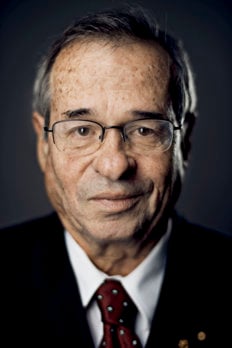
I was born on November 20, 1940 in Kibbutz Sde Nahum in the Beit She’an Valley, in what was back then the pre-independent Israel. I grew up in a relatively happy environment at the so-called “kids house,” where the kids from the same class slept together. The idea was for kids to have quality time with their parents for about two hours a day, while spending the rest in each other’s company. It was years later that I came across some books lamenting the alleged trauma that this type of arrangement may cause, although I actually found it to be a very reasonable as well as enjoyable way of growing up in a kibbutz.
I vividly recall how I and the other kids would run every Saturday morning for one kilometer from the kibbutz fence to the old tracks of the Damascus-Haifa railway. I was frequently found at the end of the group in this Saturday ritual, but I mostly managed to be the first to hit the finish line. This gave me some early hints about the role of perseverance. In fact, even in recent years, I keep maintaining the feeling that if I continue working sufficiently long on a scientific problem, I will probably find solutions to the most challenging question. Another related recollection was the fact that as a kid, I liked to play football mainly as an attacking midfielder, who supports the offense and connects it to the back flank. This idea of the importance of connecting different parts stayed with me in my scientific life.
In the kibbutz school we were subjected to rather unregimented studies, where most kids did not try too hard to study for exams, since the only consequence of failing was not being allowed to see the next movie (which was always shown outdoors). However, I was actually prepared for the exams. (Moreover, noticing learning outcomes of others who were not being forced to study for the exam shaped my future opinions on utopian ideas of learning well only because you had a good teacher. This led me years later to the opinion that without examinations and grades, it would be very hard to advance in sciences).
At any rate, although we did not have many studies of scientific subjects, I liked to experiment in building handguns and primitive voice recorders as well as other objects that had no clear relationship to chemistry. During the school year we used to work for two hours a day, whereas in the summer we worked six hours a day. Our jobs were quite diverse and mine ranged between working in the fish ponds, working at the dining room, working in gardening and being an apprentice to an electrician.
In 1957 (the last year of our high school) our small class moved to study at a neighboring Kibbutz (Ein Harod, Meuhad) with a collection of students from several kibbutzim. This was termed the “unified class” and being in this class was a great experience. That year, 1957 to 1958, was one of the happiest years in my life. As before, we did not study for any particular “useful” direction and there was no emphasis on material that could be included in the matriculation. Thus, for example, we studied very opposing opinions on communism and socialism, analyzed the famous “short course of the communist revolution” of Joseph Stalin along with much deeper thinkers like Otto Bauer and Rosa Lichtenstein.
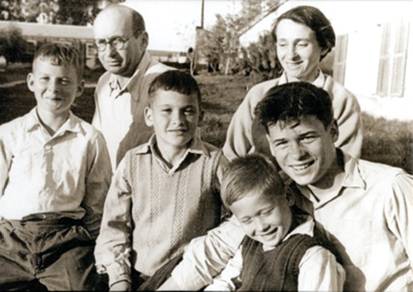
I started my army service in August 1958, first as a communication specialist (Morse transmission, etc.) in the headquarters of the famous Golani infantry brigade and then, as a communication officer in a special radio surveillance unit. After two and a half years, I finished my regular service but my commander tried to keep me in the army and told me that I could sign on for permanent service under almost any condition that I would ask for. At this time I was determined to go to a university, but I did not have a matriculation, since the left-leaning kibbutzim of that time were not interested in the option that people would go to universities instead of working in the fields. Thus, I asked and accepted a position in the IDF Chief of Staff headquarters, where my night shifts would leave me time to study for the matriculation. In fact, I was already prepared since I carried in my army kitbag physics and mathematics books during my entire service. I probably trained mice in physics with this habit since during my time at Golani the mice ate pages from my Sears and Zemansky physics book. After passing the external matriculation, I found out that my grades were not good enough to be accepted to the Hebrew University. Thus I took and passed the dreaded entrance examination of the Technion (Israel Institute of Technology). Several years later, I asked my classmates at the Technion how it is possible that their grades are always lower than mine while their matriculation grades were so high. They told me the secret: the teachers in the city schools would leak to the students the matriculation materials, whereas I and others who took the external examinations had to study, for example, the entire Bible for any possible random question.
After being accepted to the Technion, I rather randomly chose to study chemistry and started my studies in 1962. Eventually, during my third year, I became interested in understanding how enzymes can accelerate chemical reactions – sometimes by up to twenty orders of magnitude. I started an experimental project that resulted in perhaps the first NMR measurement of the fast step in the catalytic reaction of chymotrypsin, but I did not see any reasonable clues pointing towards the origin of the catalytic effect. In fact, I did suspect electrostatic effects, but my experiments showed that changing the ionic strength does not influence catalysis in a major way. At that time I took a very intimidating class in quantum mechanics at the Physics Department, learning about the so-called ‘impact parameter’. The class was much above the level of what we learned in chemistry, and the only part that I could fully comprehend was the implication that asymptotic quantum mechanical wave functions (i.e. functions that describe the nature of the system at its initial and final states) can always solve many complex problems in physics. Thus, I told one of my classmates that in the distant future I was going to develop an asymptotic wave function for enzymes to understand how they work. Of course, I did not have any clue what enzymes look like and how a wave function would explain the action of enzymes – eventually it was the EVB approach (which will be considered below) that captured the asymptotic features of enzymatic reactions.
I had to support myself with summer jobs, and at the end of the third year I got a summer project in the department of soil engineering. This involved working, with professors Rephael Mokadi and Benjamin Zur, on optimizing diffusion devices for dripping irrigation and related applications. I took clay plates, covered them with different types of cellulose layers and measured the rate of diffusion of water under high pressure. The results were converted to countless values of speed and other parameters. Then, I typically spent eight hours of calculation in order to convert tables of numbers to diffusion constant. I told about this tedious computational work to a friend, who had already seen the action of a digital computer (which was using a paper tape). He mentioned that what I was doing with a manual calculator could be done much more efficiently with a computer. I was very impressed, but unfortunately this discussion occurred too close to the end of my summer job. However, this new direction influenced my thoughts on how one can use computers to replace manual computations.
My studies at the Technion progressed quite well and I received the “best third year student” certificate from the then Israeli Prime Minister Levi Eshkol. However, when considering continuing my M.Sc. studies at the Technion, I learned that I would be obliged to take two to three courses in different languages. I decided to look for another place.
Thus, I made an appointment with Professor Shneior Lifson, who was the scientific director of the Weizmann Institute. I was attracted to him because of a news article that said that Lifson was from a kibbutz (Nir David), which is located very near to my kibbutz. Interestingly, both Kibbutzim were at 1936 and 1937, respectively, the first in the new form of settlement called Stockade and Tower (Homa and Migadal), which were enough to establish the legality of the settlement in the British Mandate period. I also learned that Shneior was moving from statistical mechanics of helix coil transitions to modeling molecules with digital computers, which was still extremely far from my interest in enzyme wave functions. I and my then girlfriend Tamar (who became my wife in August 1966) went to see Shneior at his imposing director’s office. Although he told me that he was determined not to accept any students, I successfully convinced him with the help of my grades to join his non-existent group. I moved to the Weizmann Institute in fall 1966 and started to develop what became known as the consistent force field (CFF), where the general direction was to represent molecules as balls and springs (this became known as molecular mechanics or “force field” approach) to reproduce energies, structures and perhaps vibrations of small molecules.
As a start I attempted to model cyclic amides, on the way to parameterizing amino acids’ potential functions, by an extension of the internal coordinate approach of Mordechai Bixon, who was a former student of Lifson. However, this approach involved derivatives of complex interdependent transformation matrices and after spending enormous efforts in debugging my program, I finally realized that obtaining general analytical derivatives (especially for ring molecules) is basically impossible. Out of desperation, I tried to abandon the common description of molecules in terms of bond lengths and bond angles and to move to a Cartesian coordinates description, where, suddenly, all the problems with analytical derivatives seemed to disappear. Most remarkably, obtaining vibrational modes now required only the use of one simple equation in terms of the Cartesian second derivatives. At this stage, Shneior told me that this was unlikely to be correct (a situation that continued throughout my career), but fortunately the Weizmann Institute had a specialized computer called the Golem (named after the ‘robot’ from Jewish legend that helps the famous rabbi from Prague) that had a remarkable double precision. Thus, I was able to obtain very accurate first and second numerical derivatives and to prove that I was on the right track in obtaining exact minima and molecular vibrations in a general molecule. Encouragingly, Shneior was always gracious enough to agree with me, and eventually he started telling others “don’t argue with Arieh, he will always turn out to be right.”
At that point I started to write a program with Cartesian analytical derivatives and a least squares force field refinement (using the numerical derivative in pinpointing errors). My progress with Cartesian coordinates convinced Lifson to let me finish my M.Sc. degree in less than a year and to basically jump to the Ph.D. project, considering the potential for fast progress in the general CFF direction. To reach this stage I wrote the a short master summary and a Ph.D. proposal to reach this stage, but then was called to the Army reserve force for a three week nerve-wracking “waiting period” before the Six-Day War. During the first days of the war my wife was running up and down to the shelter during the air raid alarms with a plastic bag that some assumed contained her non-existent jewelry. However, it actually included my Ph.D. proposal.
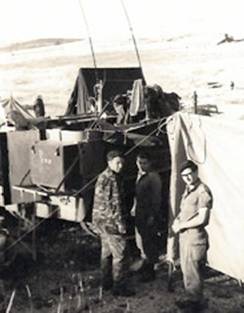
During the Six-Day War, I fought as the communication officer of a reserve tank battalion that together with another battalion took the Golan Heights. After some additional reserve service, I returned to the Weizmann Institute. Around this time Michael Levitt appeared, and following Shneior’s suggestion, we developed together the general CFF Cartesian force field programs that allowed one to use molecular mechanics (MM) and to find exact local minima and vibrations of any general molecule. The CFF parameter refinement turned out to be quite a demanding job, including inventing automatic frequency assignments, developing a general way of refining parameters that would reproduce known unit cell dimensions of molecular crystals, finding ways to evaluate crystal free energies from their calculated crystal vibrations and much more. Each of my developments further convinced me that with computers you could address almost any problem.
Incidentally, in contrast to today’s easy access to computers, my work at the computer center involved the use of punch cards, where the best turn-around time involved at most two runs a day. This meant that I would lose a day with two errors and it also meant that I had to come late every evening to try to manage to get an additional submission of my job. Thus, every time I returned with my wife from a show or other event we went to the computer center before going to sleep.
During 1968, a year that turned out to be eventually significant, I also started experimenting with combining my newly developed CFF MM method (with the spring-like description of bonds with localized electrons) and a valence bond (VB) quantum approach in a QM(VB)+MM model.
After a relatively fast completion of my Ph.D. (1967–1969), I accepted a postdoctoral position at Harvard with Martin Karplus (who visited the Weizmann Institute in the second half of 1969). Arriving in Harvard at the beginning of 1970, I discussed with Martin what would be the best project for me and we agreed that a promising direction would be to make the QM+MM CFF more general. Here the development of a QM+MM approach with a molecular orbitals (MO) description for electrons seemed to be a way to quantify the studies conducted by Karplus and his postdoc Barry Honig, who were working at that time on retinal (the chromophore of the visual pigment). The development of the QM(MO)+MM method, which I eventually called QCFF/PI, was a major project that resulted in an extremely powerful way of studying conjugated molecules but still could not describe real chemical reactions, which involve bond breaking and bond making. Overall, I enjoyed the time at Harvard, where my wife Tami and I and our first daughter, Merav, made sure to travel every weekend to different places like the New Hampshire Mountain and ski resorts. We also enjoyed the postdocs’ housing at the Botanic Garden, although Tami had the hard task once in a while (in a rotation) of taking care of Merav and the kids of other postdocs, which included undoing the winter compact snowsuit whenever a kid wanted to go to the bathroom.
Upon returning to the Weizmann Institute in 1972, I started to develop a very effective hybrid orbitals quantum program (QCFF/ALL) that represented all the atoms in a relatively small part of a molecule quantum mechanically, while representing the rest classically. I felt that this should allow me to finally make progress on my old dream of studying enzymes. At that time Mike returned from his Ph.D. work at the Medical Research Council (MRC) to the Weizmann Institute and I started to explore the possibility of combining my quantum mechanical model with his MM calculations on lysozyme. I was also advancing my π-electron calculations, trying to develop general models for chemical reactions in molecular crystals and developing approaches for resonance Raman calculations of large molecules.
The 1973 Yom Kippur War (where I fought in the Golan Heights again) was quite traumatic for me, and perhaps the major motivation to move faster to biology. Thus, I became involved in the protein folding project with Mike, where I was greatly encouraged by the remarkable success of the simplified protein model. This coarse grained (CG) model converged to reasonably folded structures of the small protein Bovine pancreatic trypsin inhibitor (BPTI), without spending infinite computer time to sample in the theoretically assumed enormous available configurational space. Incidentally, our approach was strongly criticized, implying that simpler amino acid chains would also fold similarly to our BPTI, i.e. with a glycine in the right position. Of course, the glycine was placed in the proper place in the chain of BPTI by evolution and not arbitrarily by us. More importantly, our point was that we resolved the Levinthal paradox and showed that the folding process did not require infinite sampling of the phase space. Thus, the fact that simpler systems fold like BPTI has only been a proof to our point. In fact, our accomplishment was not so much about predicting the folded structure but about simulating a folding process. The progress on the folding problem helped me to obtain an EMBO fellowship, allowing me to collaborate with Mike when he moved back to the MRC.
I arrived in the fall of 1974 at the MRC, with Tami, Merav and our second daughter, Yael, and started to focus on my efforts on modeling enzymatic reactions. My trial and error attempts led to the realization that the only way to progress is to introduce the explicit effect of the charges and dipoles of the environment into the quantum mechanical Hamiltonian. This led to the breakthrough development of the QM/MM approach, where the QM and MM where consistently coupled in contrast to the previous QM+MM attempts. Our advances also included the development of the first consistent models for electrostatic effects in proteins. This model, that was later called the protein dipoles langevin dipoles (PDLD) model, represented explicitly (although in a simplified way) all the electrostatic elements of the protein plus the surrounding water system and thus evaded all the traps that eluded the subsequent macroscopic electrostatic models.
At any rate, the use of our QM/MM approach in modeling the catalytic reaction of lysozyme paved the way for the current direction in modeling enzyme action and has become a major direction in theoretical chemistry and biophysics.
While working on the QM/MM project, I also decided to peruse my realization that semi-classical trajectory approach can be used to study photisomerization reactions, and to simulate the first step in the vision process. Here, in the absence of structural information I had the ‘brilliant’ idea of binding retinal to chymotrypsin, obtaining crystals and measuring the quantum yield. However, when I suggested this project to Richard Henderson, who was working at the MRC on the electron microscopy structure of bacteriorhodopsin, he declined, telling me that in his early work with chymotrypsin he developed an allergy to this protein and could no longer touch it. At this point I decided to model the protein effect by a steric cavity plus an assumed internal counter ion, and used the semiclassical surface hopping approach with a Schiff base of retinal constrained to be in the starting 11-cis conformation. My molecular dynamics (MD) simulations predicted correctly that the primary process takes about 100 femtoseconds, with an enormous probability of jumping to the ground state due to the very large non-adiabatic coupling. Being surprised by the unexpected large jumping probability, I discussed the issue of modeling interference semiclassically with William Miller from Berkeley (who was an Overseas Fellow at Cambridge and happened to be the world expert on this issue). Basically, I felt that with such a multidimensional system it does not matter if the crossing occurs in one point or if we allow interference between trajectories from many crossings. However, Miller confessed that he was not sure about it and I assumed that my treatment was valid (an assumption that turned out eventually to be justified). At any rate, in subsequent years, I sometimes regretted not adding some trivial (and somewhat meaningless) calculation of the isomerization in the active site of some arbitrary protein, which would also establish that I have done the first MD simulation of a protein. However, performing the first MD simulation of a biological process, addressing a real functional problem and after all obtaining the correct unknown results was quite gratifying.
I was involved in several other projects at the MRC and it was in some respects the most productive time for Mike and me. It was also the period where suddenly I started to understand what are the problems in different biological systems. It is not clear if this maturity in thinking was induced by the MRC afternoon tea breaks, or by other factors, but it was clearly a crucial change in my thinking.
In February 1976 I moved from Cambridge to the University of Southern California (USC) and started my job there. Although the teaching load was significant, I continued with a very aggressive research program.
Around 1978, I started to formulate the question of enzyme catalysis in a clear and coherent way, realizing that this issue must be addressed by comparing enzymatic reactions and the corresponding reactions in solutions. This realization forced me to extend the QM/MM to chemical reactions in solution. Thus, I had to invent a CG model for water solution, where the water molecules were represented as dipoles embedded in soft spheres and calibrated to reproduce solvation effects and other properties. This completely reasonable model was rejected by three journals with entirely illogical referees’ comments, (a phenomenon that has continued even until the present day). Had I known that my model was basically an extension of the so-called Stockmyer model (with my realization that the calibration of the model is the key to its performance) I would perhaps have saved myself major aggravation, since the referees would hopefully be less aggressive. Nevertheless, my ability to compare reactions in enzymes and in solution led to the realization that the corresponding difference can be best quantified by a Valence Bond formulation (in what became later the EVB model). This realization led in 1978 to what I believe has been the solution to the puzzle of enzymatic reactions. That is, I realized that enzyme catalysis is due to a large free energy penalty for the reorganization of the solvent in the reaction without the enzyme (the work of rotating the water molecules towards the transition state charges). The reorganization energy increases the activation barrier in solution, whereas the enzyme polar groups that stabilize the transition state do not have to rotate significantly, since they are already folded with correctly polarized dipoles. In subsequent years, I was also able to prove that the change in the electrostatic reorganization energy accounts for almost the entire catalytic power of enzymes.
My ideas of electrostatic stabilization were in line with Max Perutz’ intuitive feeling but the details appear to be fundamentally different, as Perutz and other assumed that enzymes stabilize charges by a non-polar low dielectric environment, while I pointed out to Max that enzymes actually work by having relatively fixed permanent dipoles in very polar environment. Significantly, the majority of the biochemical community did not believe in electrostatic catalysis, in part driven by the finding that the electrostatic effects on model compounds in solution are very small, and the fact that changing the ionic strength does not change catalysis in a significant way (see above my Technion days). Interestingly, when the late Jeremy Knowles visited USC in the 80s, he told me that the longer the scientific community would not believe in my electrostatic ideas the better it will be for me, since it would be harder to say that my ideas are trivial and well known.
My electrostatic ideas gave me and my coworkers a major advantage over competitive approaches, where the PDLD model allowed us to obtain realistic energetics for charges in proteins long before the continuum models with their original unrealistic dielectric constant and their initial neglect of the protein permanent polarization started to modify their assumptions and started to give reasonable results.
In 1981, I felt that I must move to fully microscopic models, since computer power started to allow such simulations and since it was clear that my advances with simple electrostatic models would be ignored once microscopic models would start to give reasonable results. This move was helped by an anonymous supporter who put me on the list of the speakers of the 1981 theoretical chemistry conference in Boulder and assigned to me a talk on all atom MD simulations of reactions in water. Although I still felt that it was too early to ask serious functional questions with full atomistic models, I decided to accept the challenge and develop a simple all atom polarizable water model and, much more importantly, used this model to introduced the microscopic equivalent of Marcus electron transfer theory, as well as to introduce free energy perturbation calculations of solvation effects. The same model has been then incorporated in microscopic free energy calculations using the EVB approach. In fact, in 1982–1983 I already introduced the same treatment in studies of enzymatic reactions.
The advantage of working and developing multiscale computational tools for studies of biological functions (rather that looking in a less focused way on technological issues such as keeping constant temperature) has allowed me and my coworkers to move very effectively. One of the best examples was the elucidation of the nature of the primary event in photosynthesis. Here, following studies of model systems with my long time collaborator Bill Parson and other coworkers, we waited four years until we could put our hands on the coordinates of the photosynthetic reaction center, and then having all the computer programs ready and tested for a long time, it took us only two weeks at the end of 1987 to convert the structure of the RC to a detailed functional mechanism. Our study combined all the different methods needed to solve this problem, ranging from surface hopping, microscopic Marcus type parabolas and free energy calculations, and actually predicted the correct sequential hoping mechanism in contrast to the super-exchange mechanism assumed by most workers at that time.
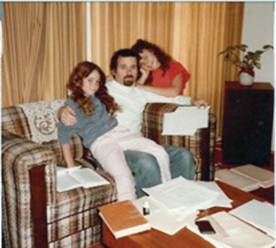
During the period 1978–1980, I started to realize that the QM (MO)/MM calculations are unlikely to tell me in a quantitative way how enzymes really work. I eventually realized that the question could be formulated in terms of the changes in energy of ionic and covalent valence bond states in moving from water to the protein active site. This led to the development of the empirical valence bond (EVB) method that became an extremely powerful way of modeling reactions in solutions and proteins.
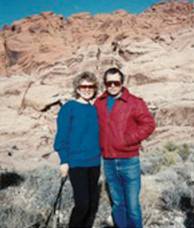
I must admit that in the years between 1978 and 1990 I was still not sure how reproducible my results for enzyme catalysis were. The initial stable results were obtained with the electrostatic PDLD model, including series of EVB/ PDLD calculations. In 1983, I already formulated the EVB in a fully consistent microscopic way (including capturing the so called non-equilibrium solvation effects). The EVB approach worked well in reactions in solutions but I was not sure about its convergence in enzyme studies. The problem was the fact that the computers of that time allowed me to run about 5 free energy perturbation mappings of 10 picosecond. This was frequently sufficient to capture electrostatic effects that converge quite rapidly, in particular with our specialized spherical surface constraint boundary conditions, but once in a while we would lose the calculated catalytic effect. Eventually, it was Johan Aqvsit (a postdoctoral associate with me from 1988 to 1990) who started to get stable results by his persistence and by running significantly longer equilibration runs.
The gradual acceptance of my work has not been a simple ride, my key idea and results were originally considered to be incorrect and then termed as trivial ideas that were persistently attributed to others. The referee reports were almost always very hostile and my fight with referees became legendary and some people assumed that I actually enjoyed those fights. In actual fact, I look at the refereeing system as a clear mark of the problem with the scientific idea of peer review, but this should be left to another essay.
In more recent years, I became increasingly interested in the functions of large molecular machines. Here we recruited back the CG idea of the protein folding but undertook a major modification focusing on the representation of electrostatic effects. The resulting CG models appeared to provide what is arguably the best current tool for moving from structure to function of molecular machines allowing us to use our CG model in simulations of molecular machines and other complex biological systems. Instructive examples are the simulations of the vectorial action of F1-ATPase (which is the best-studied biological motor), the conversion of proton gradient to work in F0-ATPase, the action of voltage-activated ion channels and the function of other molecular machines.
Today there is no doubt that computers are assuming larger and larger roles in modeling complex systems and that their role will only increase even further in the future. In this respect, the contribution of my colleagues and myself in pushing the field forward has been just the first step in what is going to be a long lasting merger of experiments and computations.
In concluding this biographical essay, I would like acknowledge the help of my students postdoctoral associates and coworkers. In particular I would like to give special thanks to my wife, Tami, who followed me along my scientific life, and helped me to both endure difficulties and enjoy successes.
This autobiography/biography was written at the time of the award and later published in the book series Les Prix Nobel/ Nobel Lectures/The Nobel Prizes. The information is sometimes updated with an addendum submitted by the Laureate.
Nobel Prizes and laureates
Six prizes were awarded for achievements that have conferred the greatest benefit to humankind. The 14 laureates' work and discoveries range from quantum tunnelling to promoting democratic rights.
See them all presented here.
